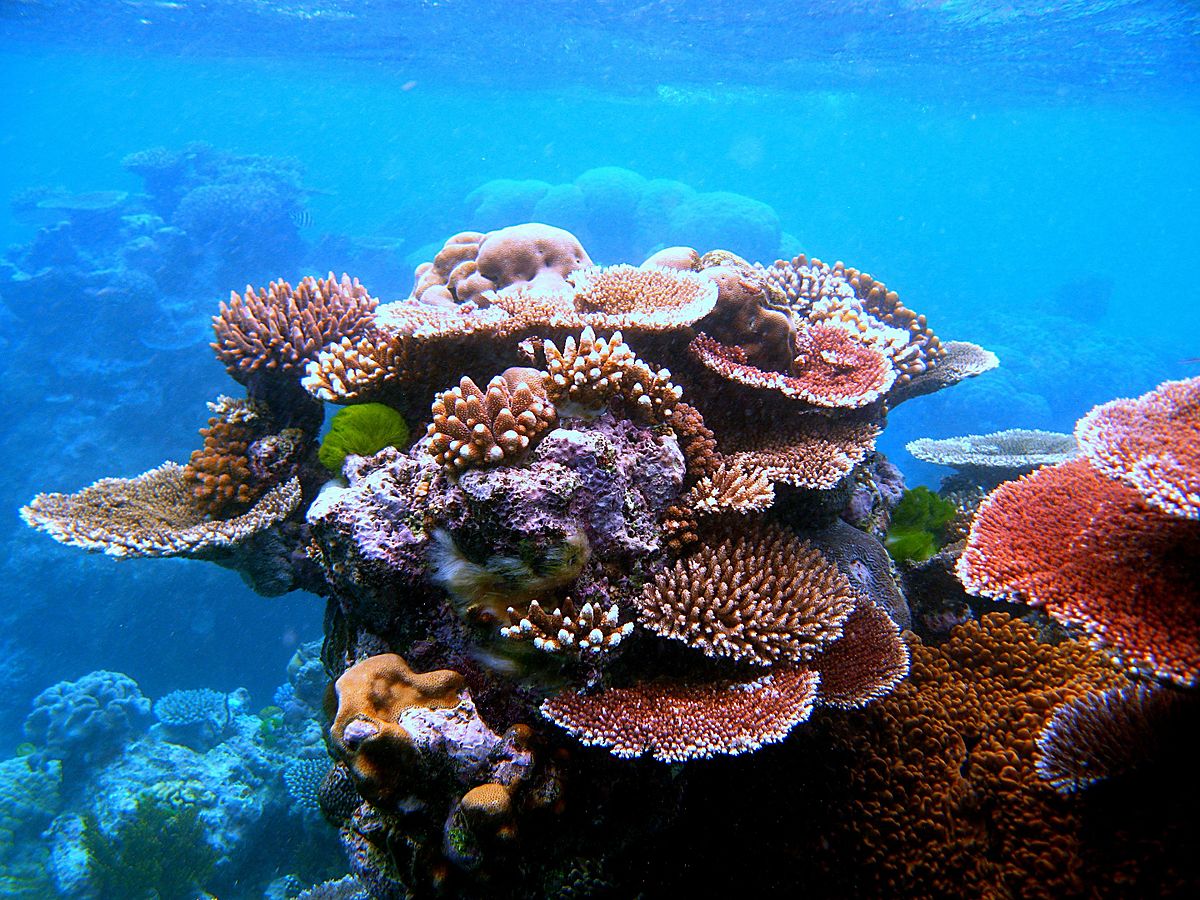Delft scientists will test coral repair techniques in Australia. They will collect coral eggs from healthy parts of the Great Barrier Reef and release larvae in damaged parts.
Coral bleaching is one of the main threats to the reef. (Photo: Wikipedia)
Covering an area of 344,000 km², the Great Barrier Reef is the world’s largest coral reef system. It contains: 56% of the world’s hard coral species; 33% of the world’s soft coral and sea fan species; six of the world’s seven species of sea turtles; 13% of the world’s species of starfish, sea urchin and sea cucumber. And it is under threat.
Coral bleaching is one of the main threats to the reef. Coral bleaching occurs when the coral is stressed by unusually warm water. The Australian and Queensland governments invest millions of dollars each year in projects to make the reef more resilient so that it survives well into the future while work is being done to adequately address carbon emissions globally. The overarching framework for protecting and managing the Great Barrier Reef is called The Reef 2050 Plan. It is within this framework that TU Delft researchers are currently testing a coral restoration technique.
Delft researchers will collect coral eggs at a much larger scale
In this rehabilitation method, in which Delft researchers collaborate with colleagues from Van Oord and Australia’s national science agency, CSIRO, coral eggs are collected from healthy parts of the reef, cultivated in tanks until they grow into larvae, and the larvae are returned to the location on the reef where they need to grow.
Working with coral larvae has been tried and tested on a small scale and in special tanks. The researchers will now investigate on location whether this process can be scaled-up. They will collect coral eggs at a much larger scale than hitherto, using adapted pumping units that can be used on dredgers.
Around this time, following the full moon in November, there is a single moment that all the coral on the Great Barrier Reef releases eggs en masse into the ocean. This phenomenon is called coral spawning. Shortly after spawning, the eggs float to the water surface where, depending on the current, they accumulate. The researchers locate these floating clouds of eggs from the air using a small aircraft.
‘The next opportunity to test this process in the wild isn’t for another 12 months’
“It’s an exciting process,” says Mark van Koningsveld, a professor at the rivers, ports and dredging engineering section (CiTG faculty) in a TU Delft press release. “We have to get to the eggs really quickly on the boat with our pumping and research equipment so we can do our tests. The next opportunity to test this process in the wild isn’t for another 12 months when the coral spawns again.”
It is important that the fragile eggs are still alive when they reach the storage tank. To make their journey as smooth and safe as possible, TU Delft’s and Van Oord’s researchers have spent the past few months optimising the pumping systems. The pump, for example, may not cause any eddies during suction and must float on the surface of the water.
Over the coming weeks, testing on location will show how the pumping systems perform in currents and waves. The researchers will test two types of pumps and two types of storage tanks in Australia. During the lab tests in the Netherlands, alternatives such as fish spawn, peas, blueberries and little balls of gel were used that mimic the structure of coral eggs as closely as possible.
If the pumps and tanks prove to be an effective way of collecting coral eggs at a large scale for later release, this will be an important step towards the rehabilitation of coral reefs. “One single ship could collect and transport some two billion eggs. That sounds like a lot, but on healthy parts of the Great Barrier Reef, that is only a negligible amount of the available total. However, if we can get the eggs to grow into larvae and we can subsequently release them in spots where the reef is damaged, that would remove one of the main bottlenecks for the rehabilitation of these reefs,” Van Koningsveld explains.



Comments are closed.